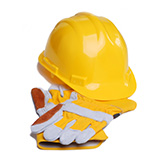July 15, 2023 | Posted by MICRO

In California, beginning January 1, 2022, all residential landlords are required by law to present a copy of “Information on Dampness and Mold for renters in California” to every potential renter before they proceed into a rental or lease agreement.
Also, the residential landlords in California must provide written disclosure to prospective tenants of affected units when the landlord knows or has reasonable cause to believe that mold visible, invisible, or hidden is present.
To be subject to the disclosure requirement, the mold must either exceed the permissible exposure limits to molds established by law or pose a health threat according to the department’s guidelines.
California booklet about dampness and mold
This law, if respected, allows a landlord significantly less liability in case of unforeseen mold issues in the rental. Also, if the landlords provide full written disclosure to the prospective tenants about the mold presence, the 2001 Toxic Mold Protection Act (HSC #26148) reduces landlord liability.
On the other hand, if the landlord is aware of the mold presence but does not give full disclosure to the tenants, he will face a significant legal responsibility eventually.
However, the landlord is not required to conduct tests, either air or surface, or units or buildings to determine whether the presence of mold exists unless there is a claim by a current resident.
Is it mandatory for tenants to receive the booklet?
Yes. Faced with false allegations, by the owners that they handed over the booklet, and by the tenants that they never received the booklet prior to the lease agreement, the Apartment Owners Association of California Inc. (AOA) has updated all Rental and Lease forms to include the tenant acknowledgment of receipt of the mold booklet. This will prevent false claims and accusations in the future.
Who is responsible for mold in California after moving and receiving the booklet?
It does not matter when the mold growth has started, after moving in, or even later on, the landlord is responsible for ensuring a habitable rental unit.
Keep in mind that if mold growth or water damage that leads to mold growth is caused by your procedures of action or vice versa, the responsibility of repairs and mold remediation will land on you.
In cases like this, the importance of the booklet comes to the fore. Alerting you to the signs of dampness and mold growth before they become a problem or a point of litigation against you.
Mold disclosure laws in California state
According to Cal. Civ. Code §§ 1102-1102.17 (2021) law, requires sellers of residential buildings with up to four units to disclose in writing any hazardous conditions, including mold.
When the mold exceeds permissible exposure limits or poses a health threat (Cal. Health & Safety Code § 26147 (2021), California State law requires landlords to provide tenants with a written disclosure, prior to signing a rental agreement.
Another interpretation of the law
The state health department on the other hand does not accept qualifications such as “permissible mold exposure limits”.
In their Statement on Building Dampness, Mold, and Health (issued September 2011, updated February 2016) they take a clear position that “only the presence of water damage, dampness, visible mold or mold odor in the building is a health threat”.
Additionally, the department highly recommends taking prompt, diligent steps to remediate mold that might be in the building, instead of trying to measure the mold levels and determining specific types of mold.
How to reimburse the mold-related costs in California?
If the owner has a legal basis to reimburse the mold-related costs, California State law allows that to be done from the tenant’s security deposit.
The procedure is as follows:
“The landlord has to provide the tenant with a written explanation of the mold damage costs within 21 days of the tenant’s lease termination. If the amount is less than the security deposit, the landlord must return the remainder of the deposit to the tenant along with the written documentation of damage deduction” – (Cal. Civ. Code § 1950.5(g)(1) (2021)
Tenants’ rights due to mold in California
Courts in California allow two types of legal aid in case of a mold outbreak, rent withholding, and repair and deduction.
Rent withholding due to mold
California law allows a tenant to voluntarily stop paying if mold appears and makes their apartment uninhabitable. What is written in the lease agreement cannot prevent this action because the landlord is bound by the implied warranty of habitability, a legal doctrine that requires providing tenants with apartments in livable condition.
Repair and deduct
This strategy implies that tenants can take care of mold removal and cleaning on their own and then subtract the cost of remediation from their rent.
How long does the landlord have to fix the mold in California?
California State law gives the landlord 30 days to fix the mold problem and any other habitability problem. If the circumstances warrant promoter attention the time for action is shortened.
The best is always to discuss the situation with your landlord. If you come to the point where a discussion with your landlord is not feasible, maybe you will have to seek representation to help with the matter.
Tenant relocation due to mold in California
If the mold is present and serious enough to cause the dwelling to be uninhabitable, the general rule is that the tenants need to be relocated. In case of relocation, landlords are usually required to remediate mold at their expense, unless it’s caused by the tenant.
The answer to the question of who is paying the expenses lies in the lease terms and the laws of the applicable jurisdiction.


